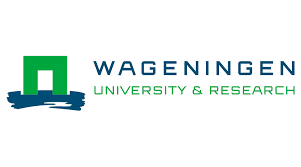Wageningen University: Counting fish in murky waters
Coastal Dutch waters are extremely rich in living organisms, including the early stages of many fish species. Particularly, the productive waters of the Wadden Sea serve as a nursery for several fish species. This saltwater tidal delta is connected to the North Sea through narrow inlets where large numbers of fish pass in and out throughout the year. However, the behaviour and biomass of fish in the inlets and the role of tidal flow and temporal rhythms (e.g. diurnal and seasonal) are poorly understood.
As a part of her PhD project, Margot Maathuis focuses on answering this question using stationary echo sounders mounted on the seabed. This work is funded by the project ‘Waddentools Swimway Waddenzee’.
Underwater units
Echosounders are effective tools for observing the organisms in the water column through sound waves. They generate pulses of ultrasonic beams propagating vertically through the entire water column. Regardless of how murky the water is, a clear picture can be obtained from the sound reflected by organisms. Normally, Wageningen Marine Research uses these systems from moving research vessels to cover large areas in limited time scales, to estimate the stock size of important commercial fish such as herring and studying their ecology. However, in this particular project, stationary devices are used to generate a yearlong time series in one of the important Wadden Sea inlets, the Marsdiep. Initially, four different frames were deployed on March 18, 2021, and the first set of data has been received by mid-April.
Figure 1) An example snapshot from the data. The left panel shows traces of individually detected fish, the right panel shows different levels of aggregations in the forms of schools and layers.
Figure 1) An example snapshot from the data. The left panel shows traces of individually detected fish, the right panel shows different levels of aggregations in the forms of schools and layers.
These underwater units, called WBATs, operate autonomously. They wake up every 1.5 hours and collect several minutes of very high-resolution data before going back into sleep mode to conserve battery life. The data from this equipment shows traces of individual fish and fish schools. These traces provide valuable information about the swimming speed, direction, size, depth and quantity of the fish. Although it is hard to identify the species only by looking at the acoustic marks, Margot is conducting a monthly sampling as a parallel study using a stow net, from which species and size composition can be inferred.
Data retrieval
This heavy equipment sitting on the seabed needs to be recovered at regular intervals for data retrieval and maintenance. The question is how to access these metal frames that are located 30 meters below the surface. Due to the heavy shipping traffic, keeping floats on the sea surface was not an option. As an alternative, the floats were kept connected to the echosounder frames during deployment with a long rope. Then, during recovery, an acoustic release mechanism is used to pop the floats to the surface. For this, an acoustic signal is sent to trigger the system so that floats can be detached from the frames. The deployment and recovery operations are being carried out by the experienced crew of buoy-laying vessel ‘de Terschelling’. Although highly dynamic sediment activity in this area causing problems, the dedication of Arjen Ponger and his team from Rijkswaterstaat enable the intact recovery of these systems. The data collection will carry on throughout 2021.

